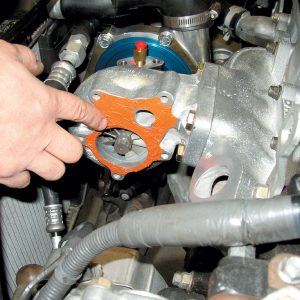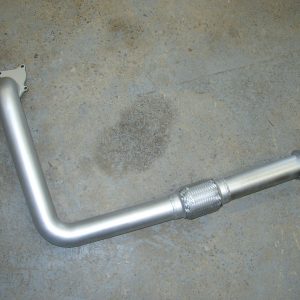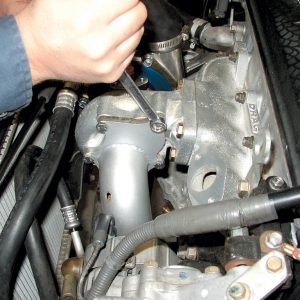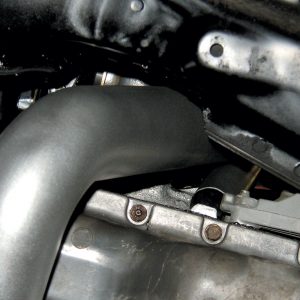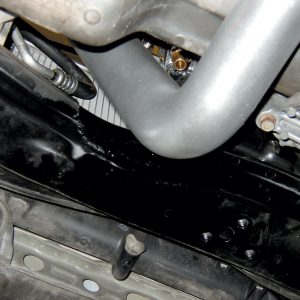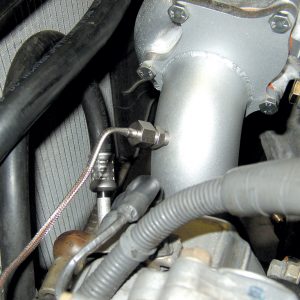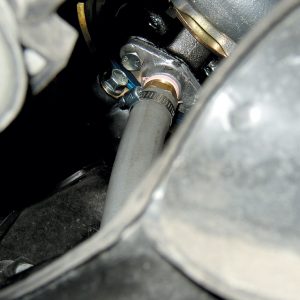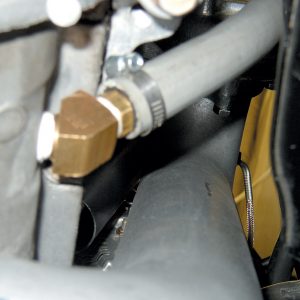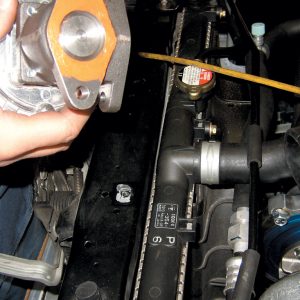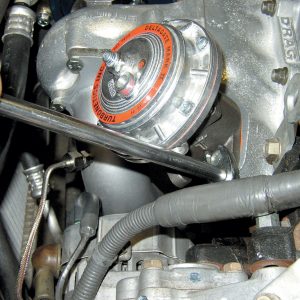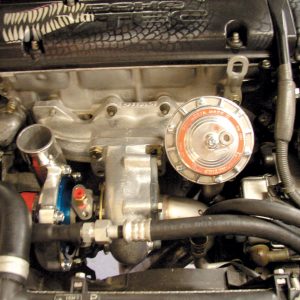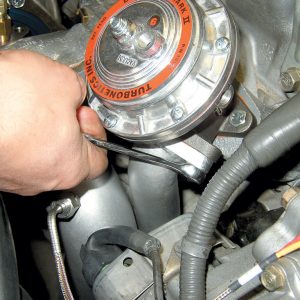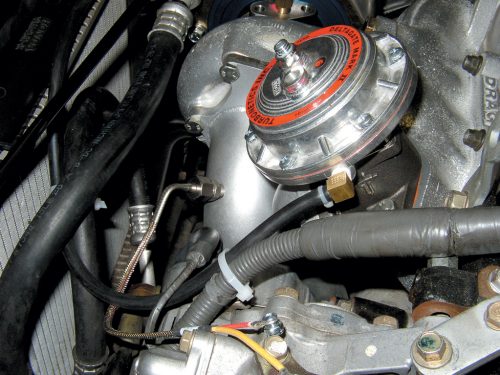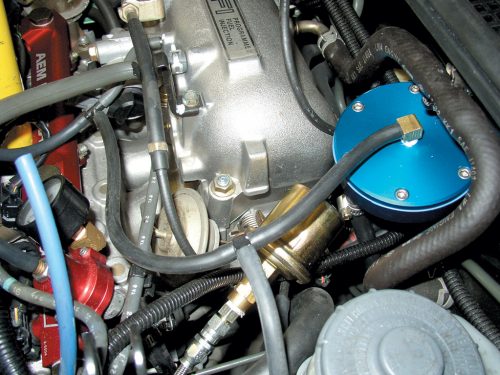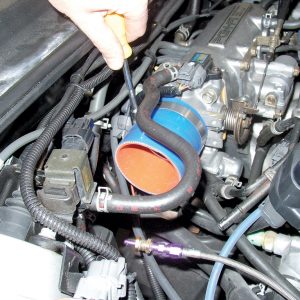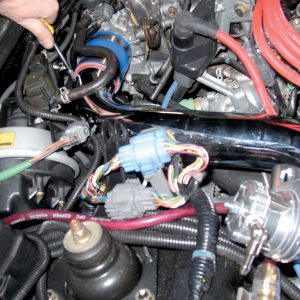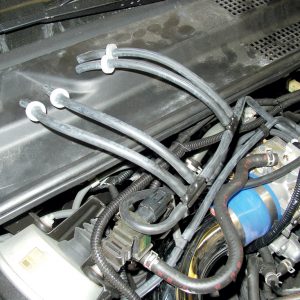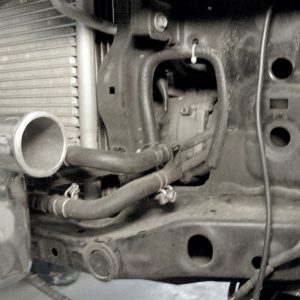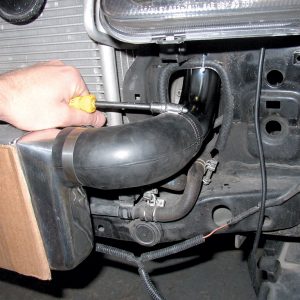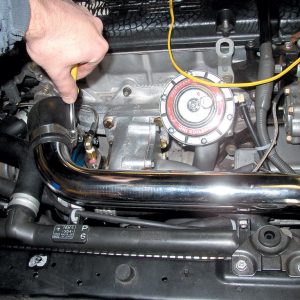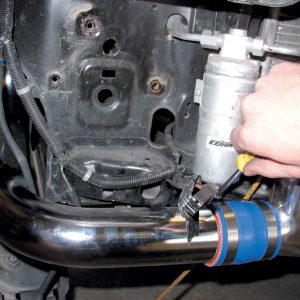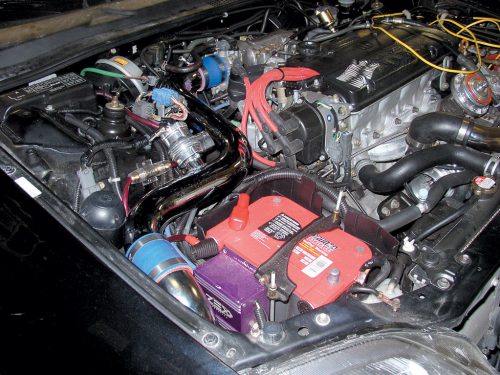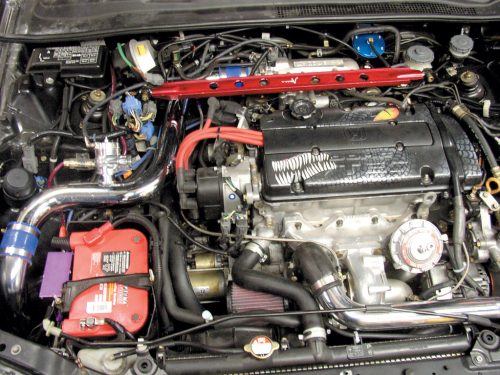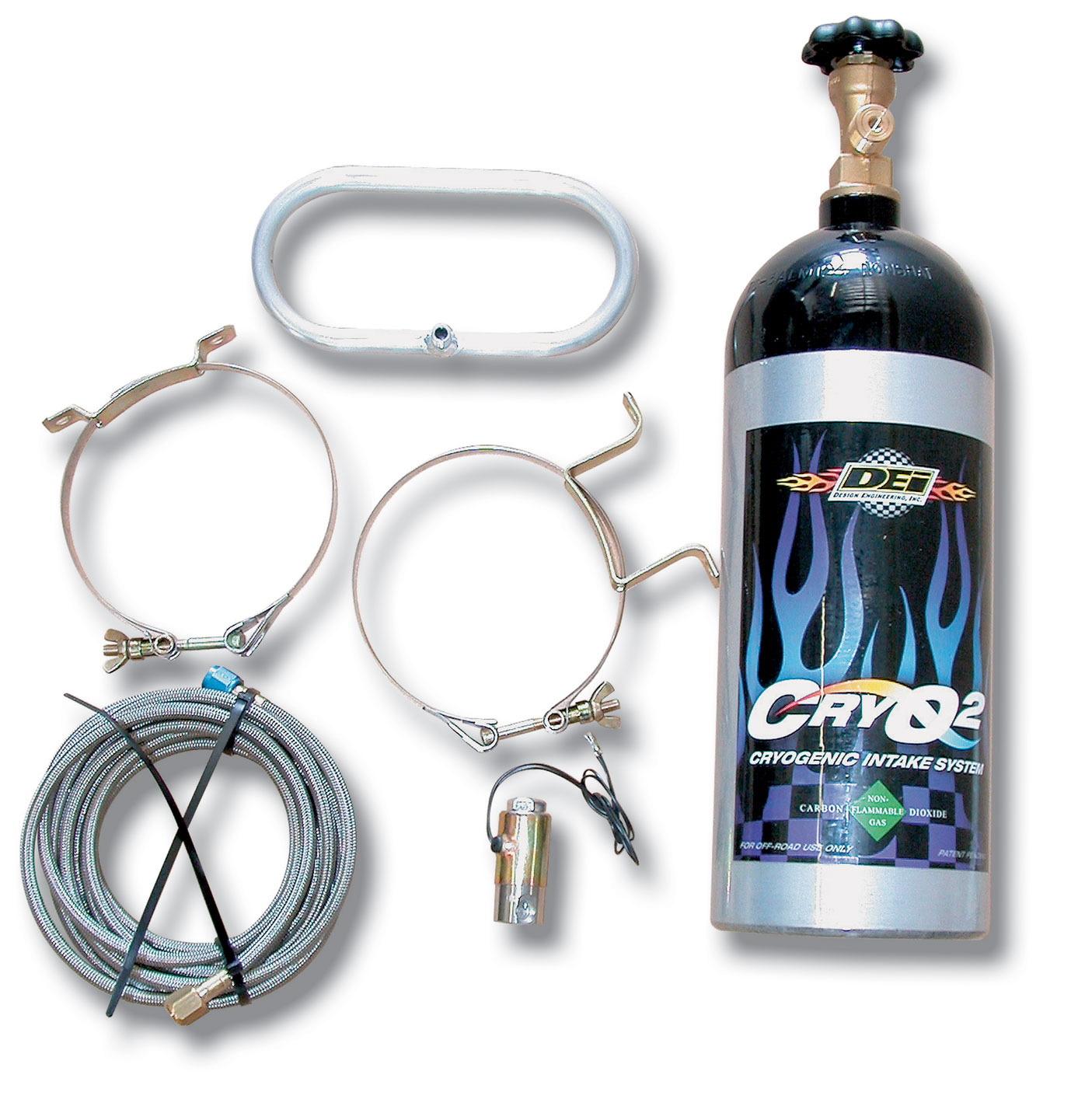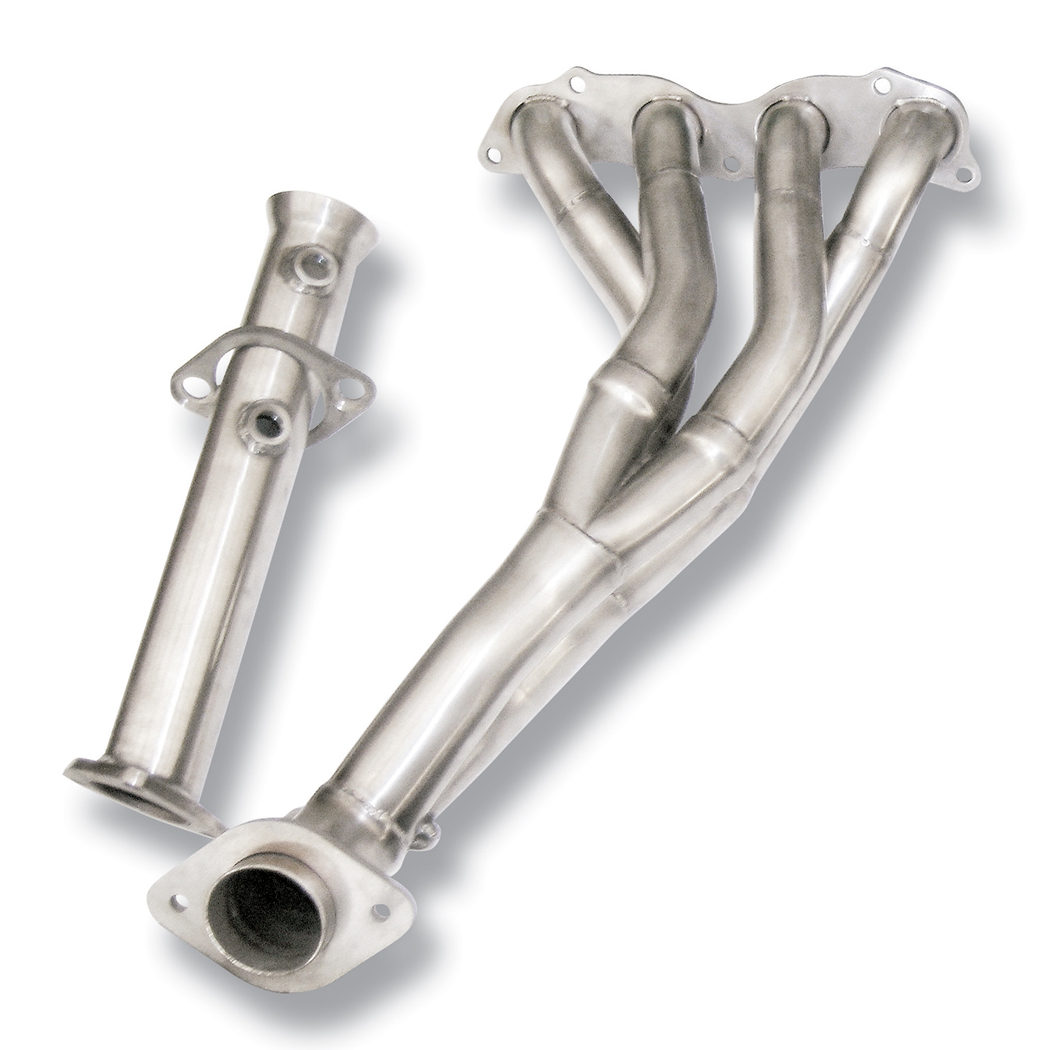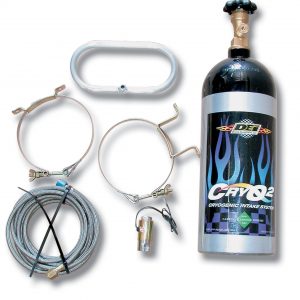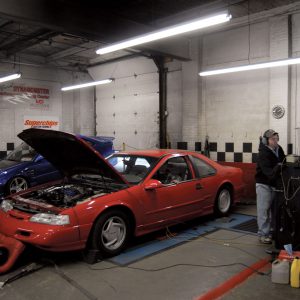ETD Racing And DRAG Give A Much-Needed Boost
Photos by Jim Edwards
The Honda Prelude may not be as popular as the Civic or the Integra, but it does have a rather large tuner following. One of the reasons that the Prelude isn’t as modified as often as other Hondas is that the model’s initial purchase price is considerably more than a Civic Si or Integra GS-R, since the Prelude was better appointed with options and a more powerful engine.
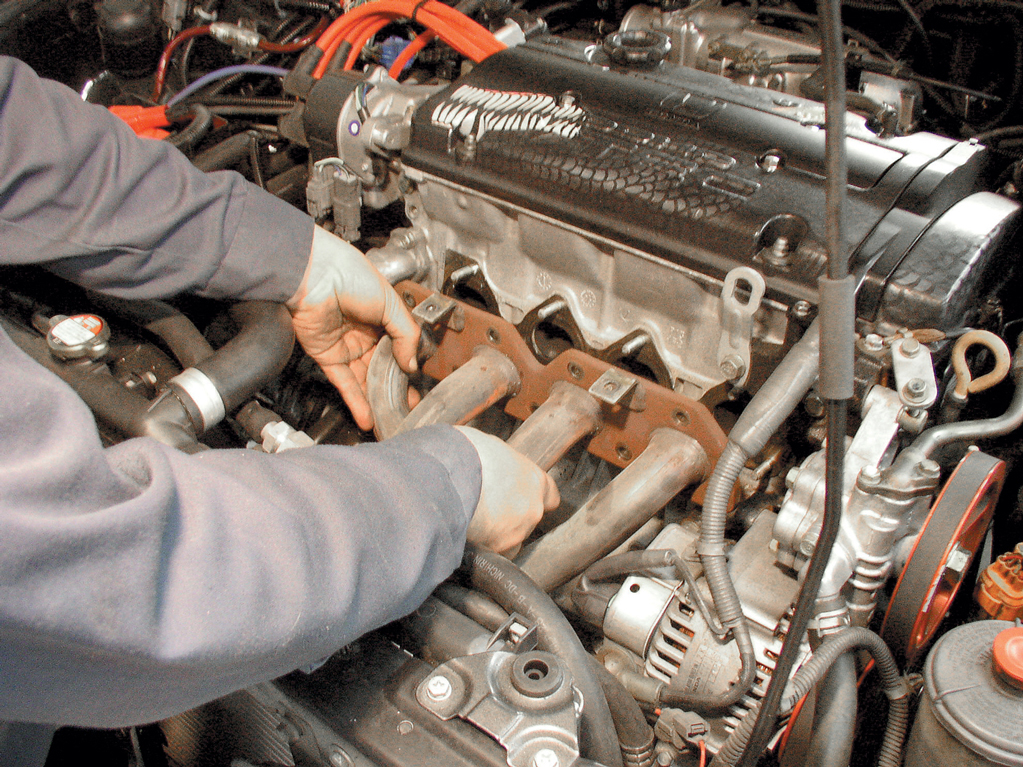
The next step was to install the downpipe, but not before using some instant gasket material on the turbine housing where the downpipe flange is secured. This method is preferred over using a conventional gasket, as it’s less likely to fail over time. The downpipe is installed and attached to the turbo.
Here’s a shot of the downpipe installed and the additional clearance gained from modifying the crossmember.
The DRAG turbo kit comes with everything you need to start making power: a high-flow 4-into-1 cast-iron manifold; Turbonetics T3/T4 turbo; Turbonetics Deltagate with 7psi spring; DRAG high-flow front-mount intercooler; Blitz super blow-off valve; DRAG mandrel-bent chrome intercooler piping and mandrel-bent downpipe; DRAG wastegate dump-tube assembly; silicone hose and stainless steel hose clamps; high-pressure/high-volume inline fuel pump; boost dependent FMU, map sensor bypass; stainless steel oil feed and return hardware; and all necessary hardware and gaskets.
The oil return hose is fit to the turbo and to a fitting installed in the oil pan. The oil return fittings on the turbo and oil pan are installed using Teflon tape to prevent any leaks.
High-temperature gasket maker was used for the wastegate as well. The Turbonetics Deltagate is installed onto the manifold, followed by the installation of the wastegate dump tube. In this installation, the dump tube is bled into the atmosphere, allowing for a mild increase in power at the expense of higher emissions.
The check valves are installed inline to blow boost out to the atmosphere so that the MAP sensor doesn’t receive a positive reading and cause a “check engine” light. The Blitz blow-off receives a vacuum from the intake manifold that has been tapped off a separate vacuum hose.
With the fuel enrichment taken care of, focus is shifted onto the intercooler piping. A silicone coupler is attached to the throttle body, followed by the “cool” pipe that leads to the intercooler. A Blitz blow-off valve was also installed on the pipe, which prevents the turbo from damage like backpedaling when the throttle is closed.
In order to install the intercooler piping properly, it’s necessary to enlarge a stock hole in the metal opposite the radiator. The opening is now large enough for the intercooler piping. Split rubber tubing is used to protect wiring while improving cosmetics. The piping is fastened using supplied hose clamps.
ETD Racing is one of many shops in Canada that are feeding enthusiasts with the fixes they crave. No stranger to performance, ETD has sponsored several successful pro racers and it is home to North America’s fastest-piston Mazda Miata. Luckily for HCI readers, an ETD customer purchased a DRAG turbo kit for his ’00 Prelude and the crew covered the entire installation from start to finish. The kit is easy to set up—it’s a bolt-on affair and only takes a few hours to install.
Article Sources
ETD Racing
905/473-5022
5201 Vivian Rd., Unit #1 Cedar Valley, Ontario L0G 1E0 Canada

 By
By 

